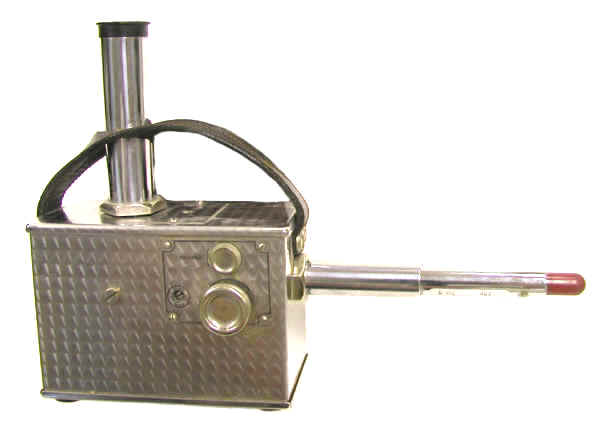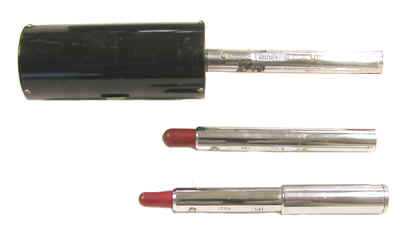Victoreen Model 70 Condenser R Meter (ca. 1937-1940)
This is a Model 70 condenser "R meter" (serial # 846) charger-reader manufactured by the Victoreen Instrument Company of Cleveland Ohio. Quoting a 1954 advertisement: "at the heart of radiation measurement and still growing in versatility THE VICTOREEN CONDENSER r-METER… with a chamber for every purpose…. The Condenser r-meter is a compact, portable, battery operated instrument for the precise measurement of gamma radiation and X-ray dosage in International Roentgens." The Model 70 was based on a design (1928) by Glasser and Seitz and commercialized by Victoreen. It proved to be very popular due to its rugged nature and flat energy response; some examples have been in use for nearly 50 years.

The primary purpose of the Model 70 was to measure the exposure rates associated with diagnostic and therapeutic X-ray units. Nevertheless, it was often adapted for gamma ray measurements. It was used in conjunction with interchangeable air-equivalent condenser chambers that were charged by the unit prior to use. After charging, the chambers were placed in X-ray or gamma ray fields (often for 1 minute) where the ionization created by the radiation would reduce the charge. When the chamber was reconnected to the Model 70, the exposure (in roentgens) could be read from an illuminated scale seen through the eyepiece.
There is a recessed focus control adjustment in the center of the plate on the top of the unit. Three controls are located on the side of the case: a recessed zero adjust, a small discharge control knob and a large charging control knob. The latter also serves as a button to illuminate the scale.
My understanding is that the Model 70 was the first commercially available meter that allowed the ionization chamber to be disconnected from the rest of the instrument (the reader). Earlier instruments that were used to measure X-ray exposures forced the physician to perform the reading while the beam was on. Because the chamber and reader were integrated into a single instrument, the physician would be in close proximity to the beam while the reading was made—not good. Some of these early devices employed a long cable between the chamber and the reader. The increased distance between the physician and the beam reduced the dose to the physician, but the long cables couldn't be shielded properly, something that reduced the accuracy of the measurements. Ionization in the cable's insulation decreased the charge on the condenser in the same way that ionization in the chamber's gas decreased the charge.
Lauriston Taylor, and he should know, said that this instrument revolutionized dosimetry in radiology (BRH Vignettes of Early radiation Workers).

The photograph to the right shows three of the many ionization chambers that can be used with the condenser R meter. From the top down: 0-0.25 R, 0-25 R and 0-100 R (with protective steel cap). The chambers are typically made of Bakelite.
Case: 8" long x 3" wide x 8 1/2" high, stainless steel, lead lined
Weight: 0 pounds
Donated by Carroll Hampleman.
References
- Victoreen Form 3043 Medical Radiation Measuring Instruments, December 1955.
- Atomic Energy Commission Radiation Instrument Catalog No. 2. 1950, Page SIC-12A.
- Advertisement, Nucleonics January 1954, Page 75.
- Instruction Manual for Condenser R Meter.
